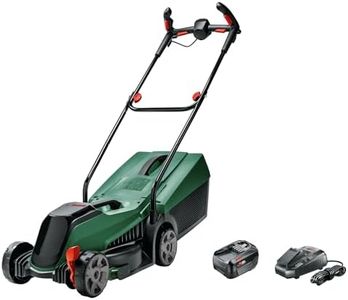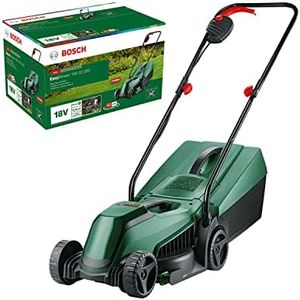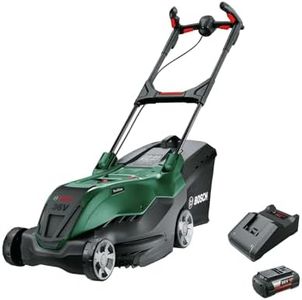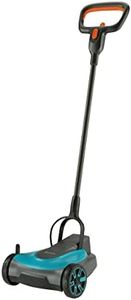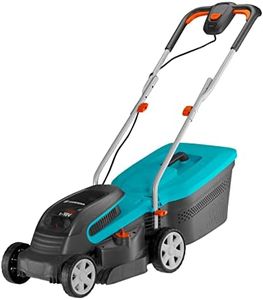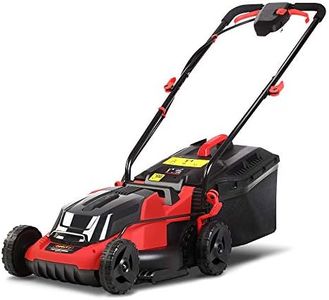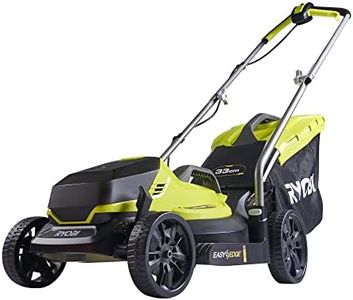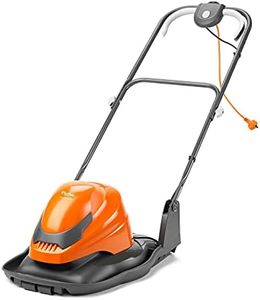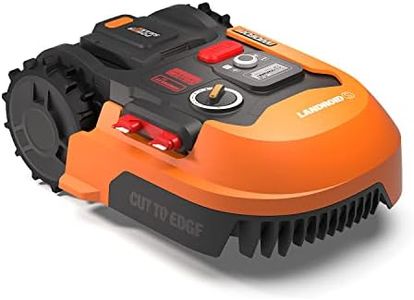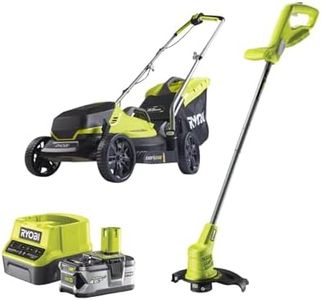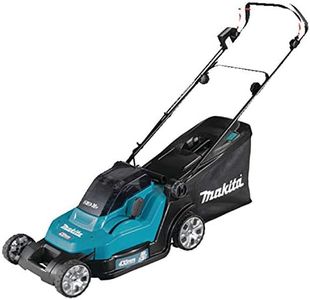We Use CookiesWe use cookies to enhance the security, performance,
functionality and for analytical and promotional activities. By continuing to browse this site you
are agreeing to our privacy policy
10 Best Cordless Lawn Mowers
From leading brands and best sellers available on the web.Buying Guide for the Best Cordless Lawn Mowers
Choosing the right cordless lawn mower can make keeping your yard tidy a much easier and enjoyable task. There are quite a few options available, varying in size, power, and features. Focusing on how large your lawn is, how long you’re willing to spend mowing, and your physical comfort will help you narrow down your choices. By understanding key features and their impact on performance and usability, you can select a cordless lawn mower that fits your needs best.Battery Voltage and CapacityBattery voltage (measured in volts, V) and capacity (measured in amp-hours, Ah) directly affect the mower’s power and how long it can operate per charge. Higher voltage usually means more cutting power, ideal for thicker or longer grass. Battery capacity lets you know how much runtime to expect; a higher Ah value typically translates into more mowing time before recharging. Light-duty mowers (lower voltage and capacity) work for small, flat lawns with lighter growth, while higher values are better for larger spaces or tougher grass. Choose based on your yard size and how quickly your grass grows.
Cutting WidthCutting width is the width of grass that the mower can cut in a single pass, usually measured in inches or centimeters. A wider cutting width means you can cover more ground faster, ideal for larger lawns. Smaller widths are more maneuverable and better for tight spaces or complex yard shapes. If you have a small or intricately shaped lawn, a narrow mower might be easiest. For wide, open lawns, a larger width speeds up the job.
Runtime and Charging TimeRuntime indicates how long the mower will work before its battery needs to be recharged, while charging time tells you how long it takes to be ready again. Longer runtimes are important for large yards or slow mowing speeds; shorter runtimes might be fine for quick trims on small properties. If you don't want to wait between charges, look for faster charging times or consider keeping a spare battery handy, especially if you have a bigger lawn.
Weight and ManeuverabilityThe mower’s weight impacts how easy it is to push and turn, especially on inclines or around obstacles. Lighter mowers are easier to handle, good for those who prefer a less physically demanding experience or have lawns with lots of turns and corners. Heavier mowers may have more power but can be harder to maneuver. Consider your own strength and the complexity of your lawn’s layout to decide what feels best.
Cutting Height AdjustmentCutting height adjustment allows you to control how high or low your grass is cut. Mowers offer different ranges and numbers of settings—you might find models with just a few choices or a wide variety. Some have single-lever adjustments, making it easier to change all wheel heights at once. Think about the look you want for your lawn and whether you need flexibility for changing seasons or grass types.
Grass Collection and Disposal OptionsCordless mowers usually offer options for collecting clippings in a bag, mulching them back onto the lawn, or discharging them to the side. Bagging keeps your lawn tidy with less cleanup but may need frequent emptying if you have a big yard. Mulching returns nutrients to the soil by finely slicing clippings, but isn't suited for wet or tall grass. Side discharge comes in handy for less manicured lawns or rapid mowing. Pick the option that matches your lawn-care style and willingness to clean up afterward.
